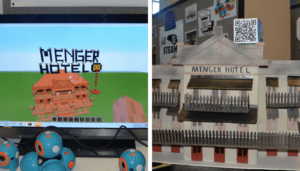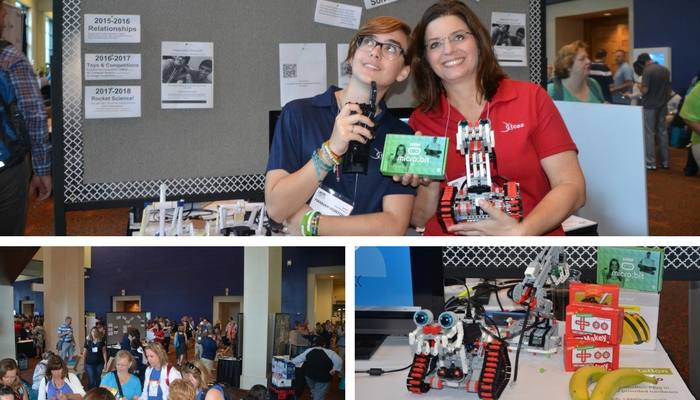I’m in San Antonio at the TCEA Showcase at ISTE 2017 absorbing the energy and excitement of the event. Here at the TCEA Showcase, we’ve got poster sessions, demo slams, maker projects, and more. We’re even giving away a FREE makerspace eBook at our membership booth. (Although, never fear; our followers who aren’t with us in San Antonio this year can still learn all about it and get their own copy here.)
The poster sessions provide a chance for attendees to really get one-on-one with presenters in a casual come-and-go environment. They can ask specific, in-depth questions and get answers from real educators who are using technology in innovative ways in their classrooms and schools. It’s enlightening to attend poster sessions not only to see some really cool presentations, but also to hear the discussions that come out of them. The presenters received some great ideas from attendees as well!
I wanted to provide a taste of one of our Monday poster sessions for our readers who aren’t able to make it to San Antonio this year. Here are some great projects, tips, and ideas from the digital storytelling and STEAM poster sessions. Read on to discover how three educators from across the country are using technology in their schools to inspire greater learning.
Easy as Raspberry Pi
At one poster presentation, TCEA President Dwight Goodwin shared how his school uses Raspberry Pi and the Internet of Things to inspire students to work together and come up with solutions on their own. He said they encourage their students to decide what they want to make using their tiny, affordable Raspberry Pi computers. They could create a Minecraft server or a camera or anything else they wanted. This keeps the learning student-directed and encourages excitement and engagement. Students who wanted to make the same thing could then be paired together and join their strengths to overcome their weaknesses. If one partner got frustrated by an aspect of programming, another partner could jump in to lead the way. Goodwin also encouraged not giving away the answers too easily. When students ask him for help, he encourages them to first research to see if the solution to the problem they have already exists.
STEAM Can Be Simple
Educational technology expert Dr. Alice Christie led a fascinating poster session on how STEAM can be relevant and rigorous without a lot of expense. She comes up with questions which she prints on stickers and then applies to big sheets of butcher paper for the kids to write their answers down on. She then includes small, inexpensive props, like plastic sea creatures or dice, that the students can move around to sort, manipulate, and use to create stories, depending on the lesson. For example, students learning about invertebrates and vertebrates, could sort animals into different columns on the paper and talk about the similarities and differences. The most pivotal part is that, at the end of the day, the students come up with questions for the following day that they want to answer. The lesson then pushes them to become better at asking questions and pinpointing more specific questions that will lead to greater inquiry. Dr. Christie saves the butcher paper from day to day and students can review them at the end of a multi-day lesson. This helps them see that learning is an iterative process and one day’s answers can inform the next day’s questions.
Cross-Curricular Ghost Stories
Nicole Hicks of Celeste ISD shared some fun ways to combine history and creative writing with technology. The students researched supposedly haunted places in Texas, such as the Menger Hotel. They then wrote a research paper about the history of the building and its place in Texas history. They also wrote a fictional story about events occurring there. Finally, they had to create a video presenting their knowledge of the place. Some students built an actual scale model based on dimensions determined from Google Maps (using both their mapping and measurement skills in the process). Others created a replica of the hotel in Minecraft. They used a green screen in their video to make it appear as if they were on site at the historic place. They then used the app TouchCast to include video-in-video and offer viewers a virtual tour of their model, including all of the exciting history they had learned.

Two different takes on the Menger Hotel
More Great Ideas to Come
These cases came from just three of the posters in one time slot here at the TCEA Showcase. I’d love to share all of the incredible stories and ideas, but it’s far too much to capture in a single blog post. If you’re here at ISTE 2017, come visit the TCEA Showcase in the Park View Lobby for many more poster sessions over the next couple of days. We’re covering high interest, tech-rich topics like programming and robotics, augmented/virtual realities, inclusive learning, and the maker movement. You can also catch one of our 20-minute, fast-paced demo slams on topics like technology infrastructure, innovative learning environments, and more! Get the whole schedule here, and we hope to see you soon.

